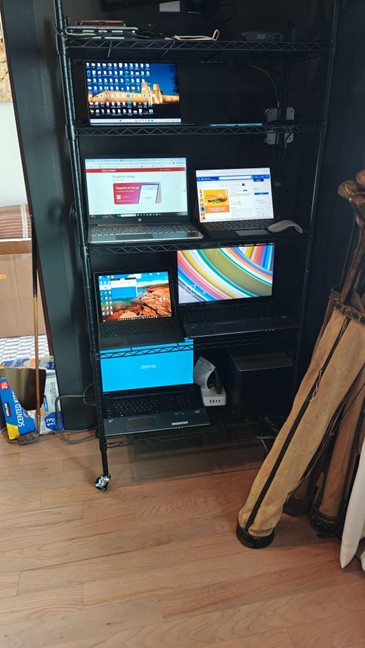Document your email process before the zombies get you
If you disappeared suddenly, could your email team carry on? Or would they struggle to pick up the slack?
This is relevant now because people are taking time off for vacation. But illnesses, family emergencies, unexpected layoffs, and other disruptions can pull you away from work without warning, leaving you no time to brief anybody before you go.
The best way to keep the wheels turning is to document everything – your responsibilities, workflows, schedules, deadlines, reports, information sources, and resources – and put it all down on paper or in a group-accessible online folder.
Documentation is important for any job, from the CEO on down, but it's extra important for email marketers because, frankly, nobody else knows what we do.
If you're the only email person on your marketing team, not having that documentation can jeopardize the success of your finely tuned email plan.
Document – and do it now
I was reminded recently about the power of good documentation. In the space of just a couple of weeks, I lost a beloved uncle and my father. I had to be elsewhere for what added up to be several weeks. My team used my documentation to jump in and carry on in these back-to-back absences. But then something else happened that reminded me, once again, of the need to document.
As the computer expert in my extended family, I ended up with all of the digital devices my father and uncle used. Every phone, computer, laptop, and tablet is now in my office.

Along with these devices came all of the logins I needed to access their contents – passwords, usernames, and PINs. Had my family members not documented all this data, I would have faced a logistical nightmare. But each one had taken the time to get their lives in order.
And, as I worked through each device, unlocking and consolidating my family members' digital lives, my thoughts naturally turned to email.
Documentation won't get you fired
We need to document our work lives the same way we should document our personal lives. Documentation keeps your operations running smoothly. Build it into your marketing workflow, and not just because it will help your team carry on in your unexpected absence. It also protects your legacy as a team leader and significant contributor to your team's success.
I’ve heard some crazy reasons why people don't write everything down. The topper is that people worry that their teammates will discover their secrets and take over their jobs, and they’ll get fired as soon as they step back into the office.
So, they hold something back – the "secret sauce" that lets them do their jobs better. That doesn't help anybody and can even aggravate the problem.
If you share that fear, know that you aren't just jeopardizing your email team's success. You also tarnish your legacy and put your reputation at risk.
3 steps to document your work process
As I write this, we are in the summer slowdown just before Q4 and 2026 planning kicks into high gear. It's a great time to create your job documentation and to let trusted team members know where to find it. These four steps will help you get started.
1. Process
Let's go back to that secret sauce. It's your key to success, your way of doing your job differently or better than everyone else. It's why you were hired over all those other applicants. You don't have to give it all away, but you should share enough of it to empower your team members to pick up where you leave off.
Your secret sauce isn't just your posted duties. It's also your personal productivity hacks and the items on your daily checklist that aren't included in your job description:
- Your regular daily schedule, including standing meetings
- Whom you report to
- Who reports to you
- Whom you check in with every day because of your direct reports
- Where you log in, including your daily calendar, passwords, and usernames
- Where you keep key files like a spreadsheet with projects, deadlines, key contributors, etc.
- Your organizational structure
- Your daily schedule
- Your non-tech vendors and contractors, including direct contacts
If you aren't sure what to include, picture someone sitting in front of your computer and trying to decode what you do. Write everything down and then go back and clean it up later.
2. Your tech stack
I know my company's tech stack better than anyone else in my company. Because I run an agency, I also know the tech stacks our clients work with. How about you?
You need a comprehensive list of everything you work with and all of your processes. Your list should include these areas:
- All tech vendors, including direct contacts and contracts
- How you access different systems, including usernames and passwords
- Where your tech systems get their data
- Your dependencies
- Any redundancies or backups should systems fail
- Your technology review schedule and process.
This last item is essential. Set it up now if you haven't already. Your goal is to build auditing your tech processes into your regular workflow. You'll know whether they are running as you expect without waiting for something to break down.
In a wider perspective, your tech stack enables you to get your emails out the door on time, at the right time, to the right people and in their inboxes, and to understand how well they work, both as technical products and as a means to help you achieve your team and company goals.
Diagramming your tech stack on paper – virtual or real – helps your team understand how everything works and makes it easier to jump in if something goes wrong while you're gone.
It also benefits any moves you make to upgrade your tech. When my company does platform migrations for clients, we rarely, if ever, find companies that do this. Having your processes diagrammed would save time and highlight the areas you need to fix.
3. Reports
We all swim in an unending stream of reports. In my job, I track six dashboards. These help me execute on business and keep me on track with finances, insurance, responsibilities, purchase orders, taxes, and the like.
I also have a personal dashboard that I built five years ago. I'm the only one who can change it. If the zombies grab me tomorrow, somebody needs to know about that dashboard. So, I have it documented in notes and comments about how I derive that information or what cells are referenced, because the spreadsheet alone is incredibly dynamic and dependent upon data from other sheets.
If you have a similar system of documentation, that's great. But do your key team members know how to read them, add information, or get information from those reports? Do they know when you post reports or who gets those reports?
I have specific reports for my board of directors. I have a tab in one of my dashboards for that, but it's not labeled "Send this to the Board of Directors once a quarter." It's labeled "BOD." How would you know that if you aren't inside my head?
That's why it's so important to write everything down: how you create your reports, where you get the information for them, and who gets them.
Wrapping up
No, documenting everything won't get you fired. And I'm not asking you to send it out to the world. In my father's case, he had a folder on his desktop labeled "Margo, look here." That was where he saved all his passwords and documentation. It has been a timesaver and stress reducer in the weeks since he left us.
So, now, if you're in a slack period, take some time to build up a folder of documentation. Don't worry about getting everything done all at once. Start with the most important things people would need to know to keep the wheels turning, and then add more items as you think of them. Then, put it on your desktop and tell a trusted coworker or two, or your assistant, where it is and how to use it.
Whether you move up in your company, take a job elsewhere, or go on vacation and fall out of contact, you can reduce the stress your absence imposes on your team. That helps your team keep going and burnishes your reputation to boot.
One last thought: If you aren't the team leader, do you know if your boss has any of this written down? Maybe now would be a good time to show them this column and ask them to document everything, should the zombies capture them.
 Photo by Caitlyn Wilson on Unsplash
Photo by Caitlyn Wilson on Unsplash

 How to resolve AdBlock issue?
How to resolve AdBlock issue? 
 Ryan Phelan is Managing Director of RPEOrigin.
Ryan Phelan is Managing Director of RPEOrigin.